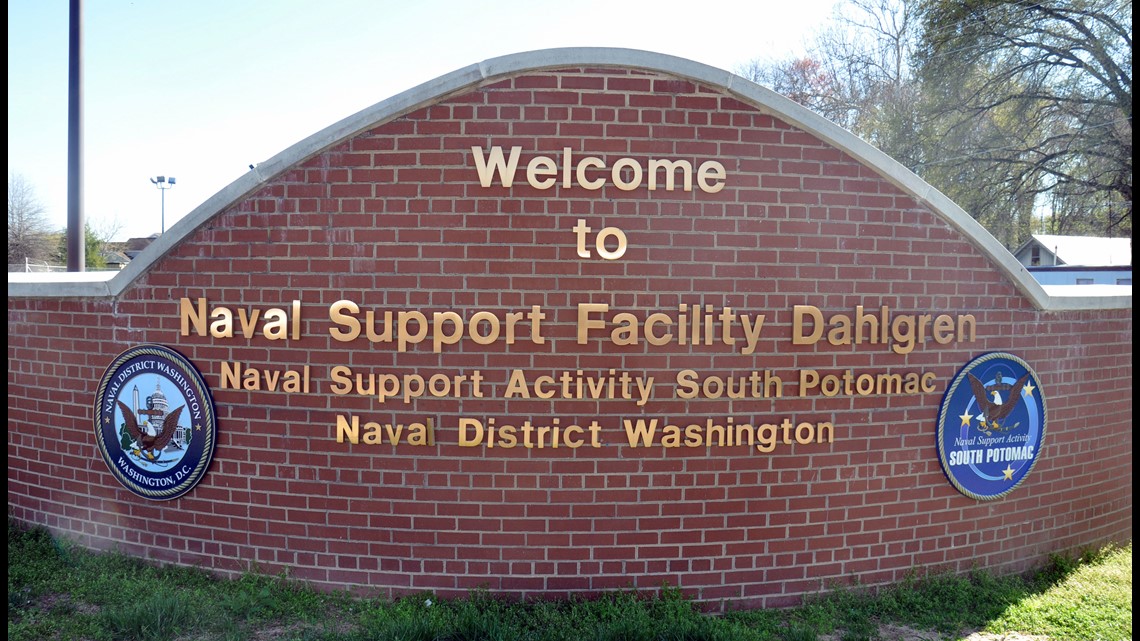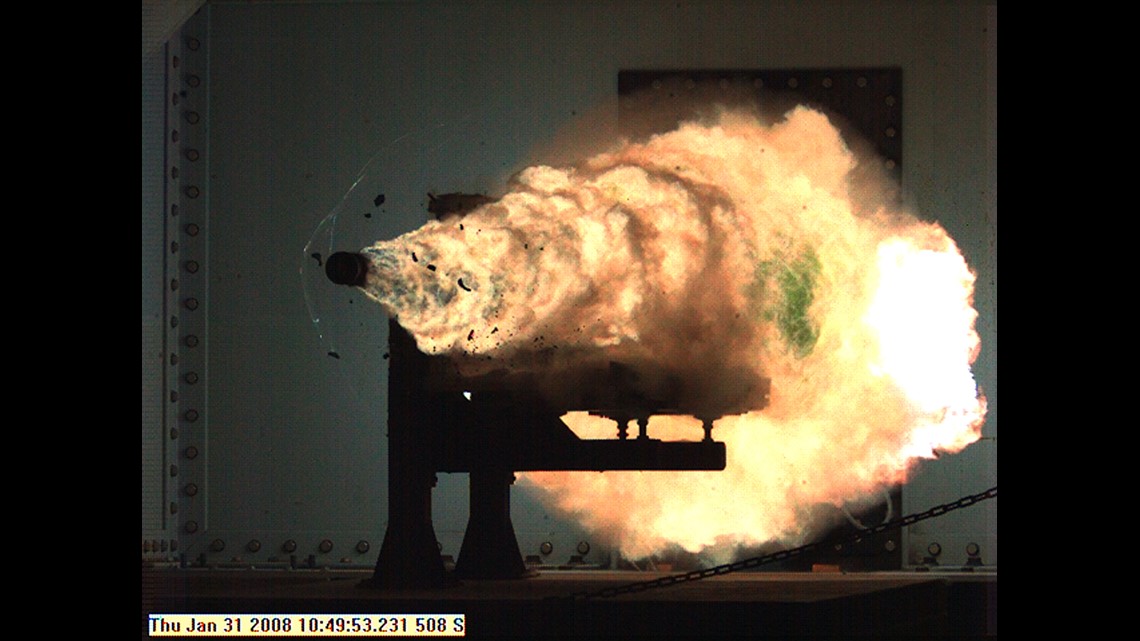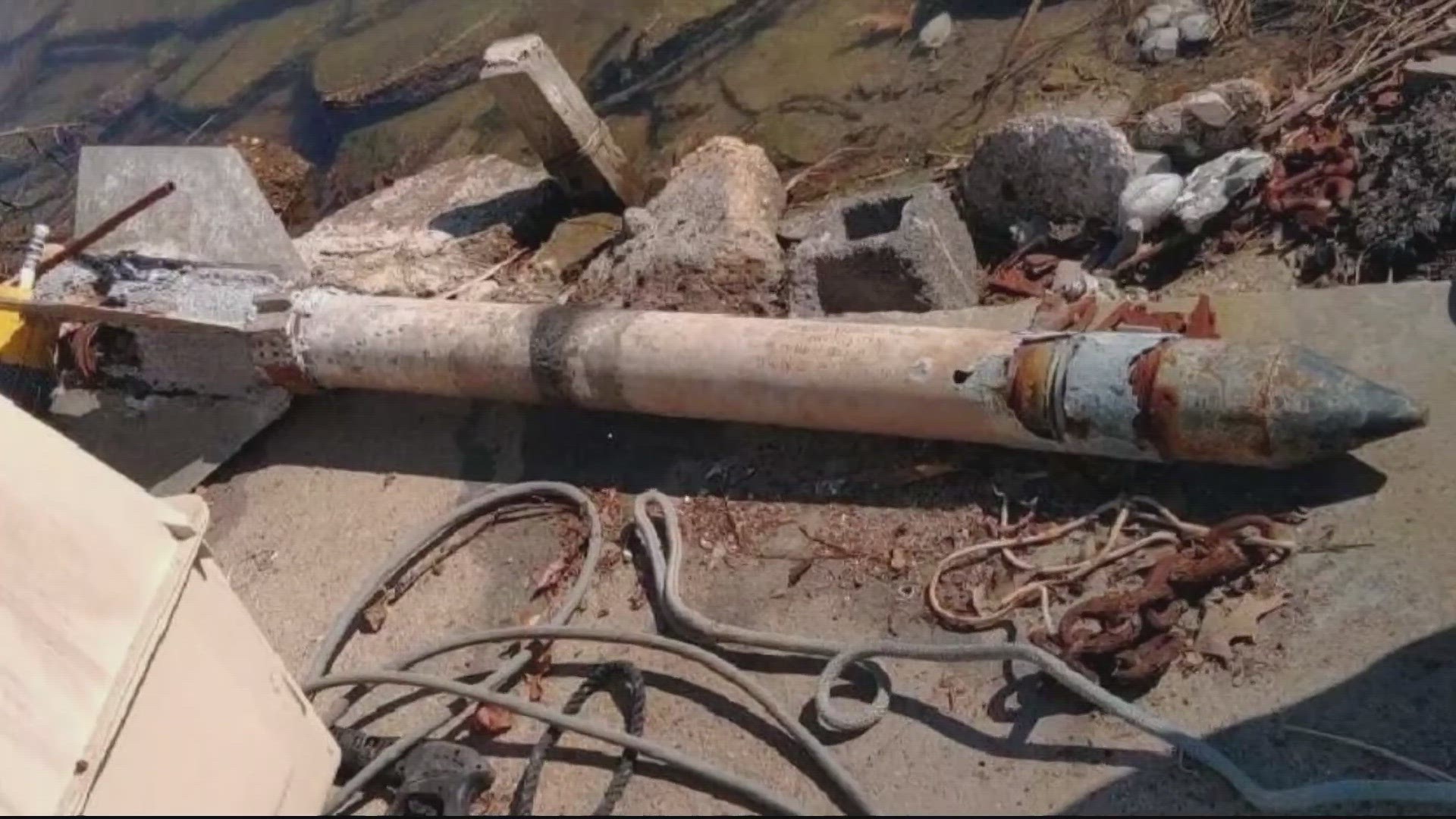COBB ISLAND, Md. — The Potomac Riverkeeper says the U.S. Navy has been trashing the Potomac downstream of Washington for decades, and it's time to put some limits on it.
The Riverkeeper and the Natural Resources Defense Council filed a new lawsuit this week against the U.S. Navy.
The environmental groups claim there are tens of millions of pounds of waste in the river from weapons testing, and the Navy should get federal permits if they want to keep shooting into the water.
The target of the environmental lawsuit is the Naval Support Facility Dahlgren, on the shores of the lower Potomac in Virginia.
The lawsuit says boaters and commercial fisherman from both sides of the river sometimes find the potentially dangerous remnants of weapons testing in the river. A photo of a rocket the environmental groups say was found on the bank is included in the suit.
The Navy shoots everything from conventional artillery to laser guided rockets into the Potomac between Charles and St. Mary’s Counties in Maryland, and the northern Neck of Virginia.


Navy patrol boats shoo away boaters before all firing sessions.
Weapons testing at the site dates back to 1918.
The Navy has applied to further expand its firing range which is already 51 miles long.
But according to the lawsuit, the Navy has never obtained a federal Clean Water Act discharge permit for the waste and potential toxins that go with weapons testing.
Potomac River Keeper Dean Naujoks says that must end.
Everybody and anybody who discharges to the Potomac River or the waters of the United States has to have a Clean Water Act permit and the Navy doesn't have one," Naujoks said.
"There's no permit, no limits for it. And the Navy has discharged by their own records over 33 million tons of ordnance and munitions into the river," Naujoks said.
Naujoks pointed out a 2013 environmental impact statement lists over 50 chemicals and organic compounds that have been discharged to the river over the decades.
"There's over 50 listed and a lot of these are really dangerous," Naujoks said.
"There's this area called the Dense Zone, which is 11,000 to 13,000 yards downstream where the Navy has admitted they discharged over 69,000 rounds of munitions per nautical square mile. This is where the river is five miles wide. So this is right near Colonial Beach and Cobb Island."


The 2013 document includes comments and reports from multiple state and federal agencies that say the impacts of weapons testing have had insignificant or no impact on species like sea turtles, rare surgeon and dolphins in the river.
But Naujoks says those conclusions are based on modeling and not actual testing to see what' toxins may be present the river water and sediment.
Dahlgren also has three toxic superfund waste sites on shore, according to federal records.
The Navy did not immediately respond to WUSA9's requests for comment and information about the new lawsuit.

